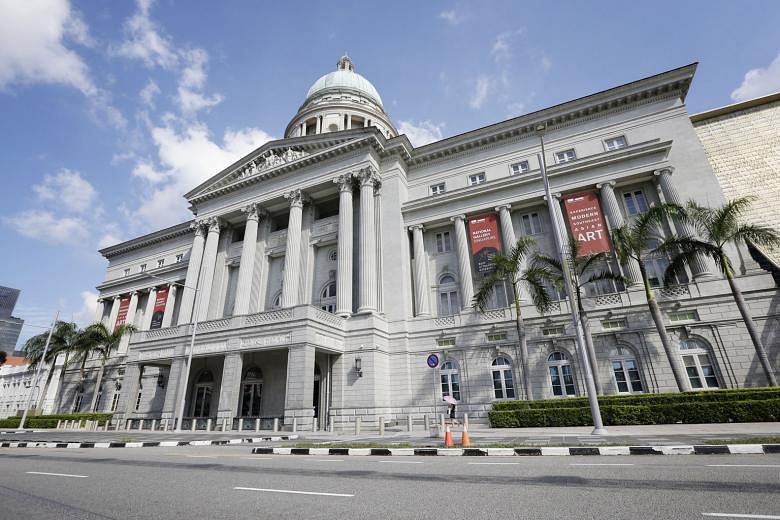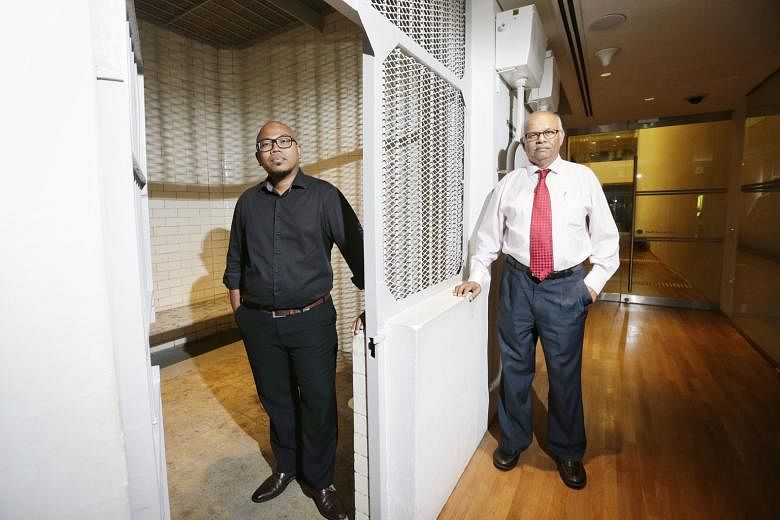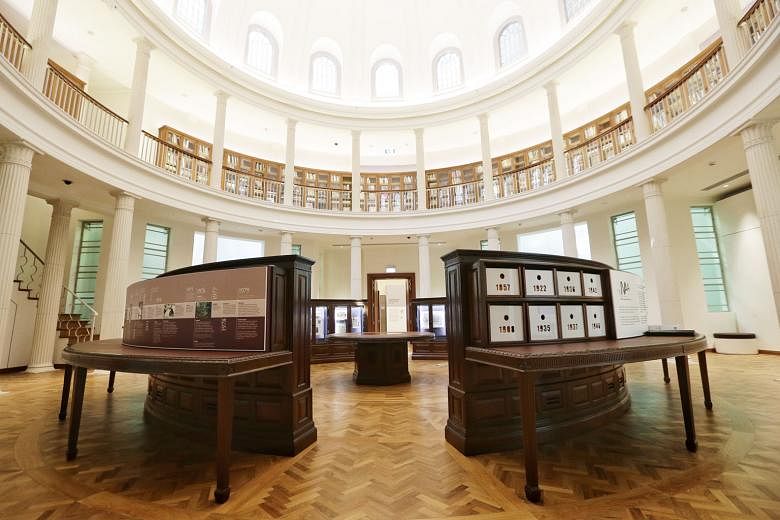The impressive grey colonial building with its imposing giant columns and distinctive 65m tall copper-clad dome has been transformed from the highest Singapore court to the repository of the Republic's best art.
Now, instead of accused persons walking into the Supreme Court to be dispensed justice, visitors amble in to enjoy the ambience of classical architecture and the largest public collection of modern Singapore and South-east Asian art .
The former Supreme Court houses the National Gallery Singapore (NGS) together with the adjacent former City Hall.
The court started out within the Old Parliament House and former Empress Place building (now the Asian Civilisations Museum).
In 1939, the Supreme Court moved into its St Andrew's Road premises, which was built at a cost of 1.75 million Straits dollars.
Buried beneath its foundation stone is a time capsule, to be opened in the year 3000, containing six Singaporean newspapers dated March 31, 1937, and a handful of coins of the Straits Settlements.
In modern times, the court has seen the highest-profile cases in local history, including the Adrian Lim case, where a medium killed two children in Toa Payoh, and the "body parts murder", where tourist John Martin Scripps killed a stranger he had met at Changi Airport.
Mr S. Kathiarasan, 69, a senior assistant director of the legal directorate, who has worked at the Supreme Court for 38 years, recalled: "The 'Adrian Lim' and 'body parts murder' cases drew particularly large numbers of people. We had to issue passes and manage the huge crowds that turned up to witness the hearings."
Mrs May Hui was 28 years old when she sat in at the Adrian Lim trial, and the passing of the death sentence left her "utterly shocked". She vowed never to set foot in the courts again. But more than three decades later, the 63-year-old NGS guide now shares her experiences with visitors.
Lawyer Jonathan Tan, 56, remembers litigating shipping law cases at the building.
"It was a very stately and grand-looking building," he said. "Not just visually but also olfactory - you could smell the lacquered wood that lined the courtrooms."
He compares it with the current Supreme Court building, which he said is a lot more clinical.
National University of Singapore professor Kevin Tan, 55, who specialises in Singapore's legal history, also remembers doing research in the court's Rotunda Library in the 1980s.
"The building was intimidating. And if one were to step into the building, they could immediately sense that justice was meted out (here)."
But there were lighter moments, too. During office breaks, the staff turned the building's airwell into a de facto lounge.
"We would head there for our lunch breaks, sitting around playing chess or carrom," said Mr Kathiarasan. "There was also a makeshift badminton court there!"
Inspired by the Old Bailey in London, the former Supreme Court features impressive Corinthian and Ionic columns, a tympanum, and the dome.
Beyond these classical elements, the building, designed by Frank Dorrington Ward, also showcased some major architectural innovations of its time. "Shanghai Plaster" - a composition of sand, cement, and crushed granite often mistaken for quarried stone - clads the building's exterior. Cheap, durable and easy to maintain, the material was chosen to keep within the building's tight budget.
Inside the building, faux marble tiles, locally made from rubber, lined the corridors to not only give the foyer an Art Deco effect, but also to help dampen the noise from human traffic.
But, perhaps, the biggest innovation was a series of concealed passageways that led prisoners from their holding cells directly to the courtrooms' docks. This was to keep them away from the public eye and media flurry.
In 2005, the Supreme Court moved next door to its current air-conditioned complex and, six years later, a $530 million restoration and construction effort commenced, converting the two civic district buildings into a single arts venue.
Spearheaded by French architectural practice studioMilou and CPG Consultants, it saw the courtrooms transformed into art galleries, and the holding cells and passageways turned into office space. The old Rotunda Library now showcases research materials used by curators to develop the National Gallery's South-east Asia exhibition.
Mr Jean Francois Milou, managing director at studioMilou, said that careful attention was paid.
"Given the historic, symbolic and aesthetic importance of these rooms, the main challenge was to find a balanced approach between preserving their historical feel and features, while integrating them within the wider scheme of a contemporary art gallery," he said.
Visitors can still feel the "solemn" atmosphere of this edifice, said Mrs Hui. So, whenever she conducts her tours, she is sure to set the scene of the space, hoping to put visitors in a "happy mood".
"I am so proud and happy with this building, and want to share it with everyone," she said.
"I want people to see beyond its facade, the transformation from the Supreme Court to the Gallery, and be touched by the building's many stories."



